The Most Influential Cars of the 1960s
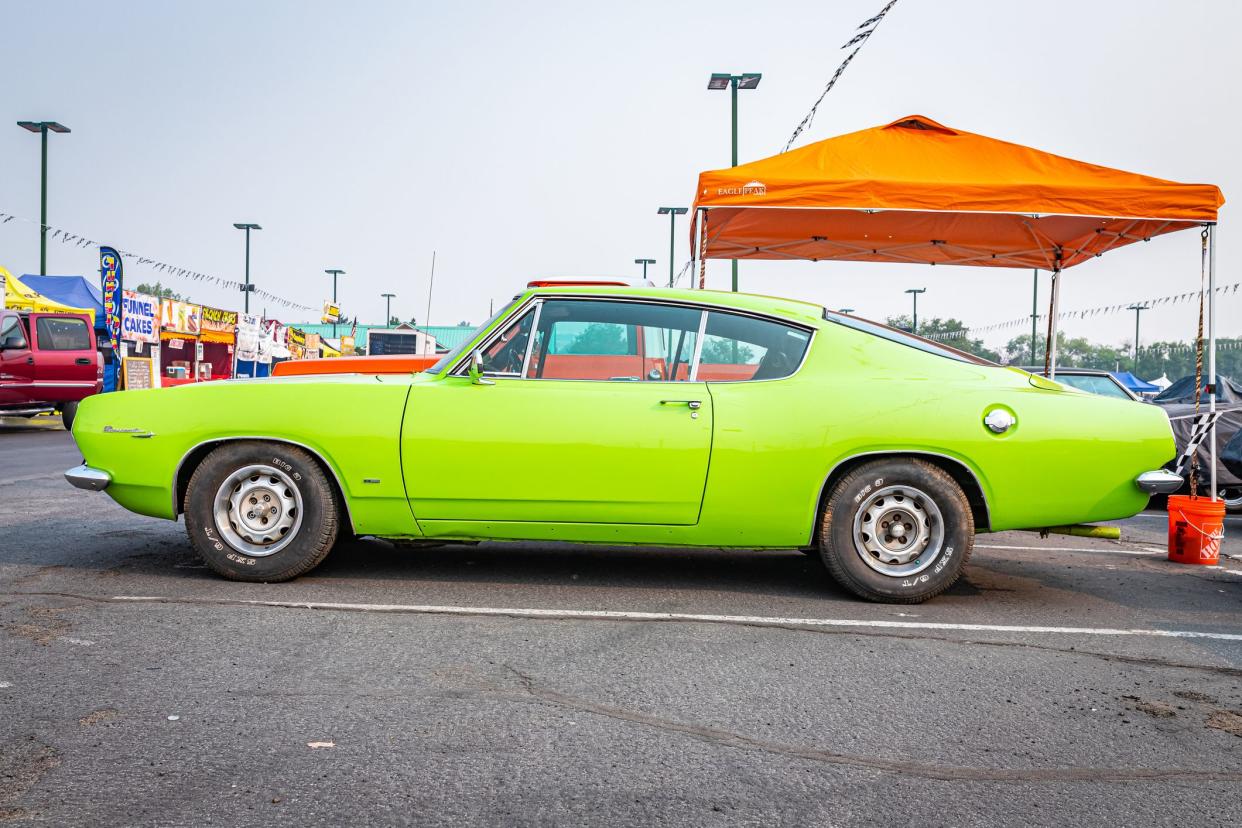
Muscle cars took the U.S. automobile industry by storm during the 1960s, with every automaker from Ford to Chevrolet launching models to compete with each other. The ’60s also saw some over-the-top luxury models and flashy foreign supercars. It was a prominent decade in the history of cars, with tons of innovative models that changed the game forever between design and style and power and performance. Here’s a look at the greatest legends of the decade.
Related:Tail Fins, Hood Ornaments, and Other Classic Car Features You Don't See Anymore
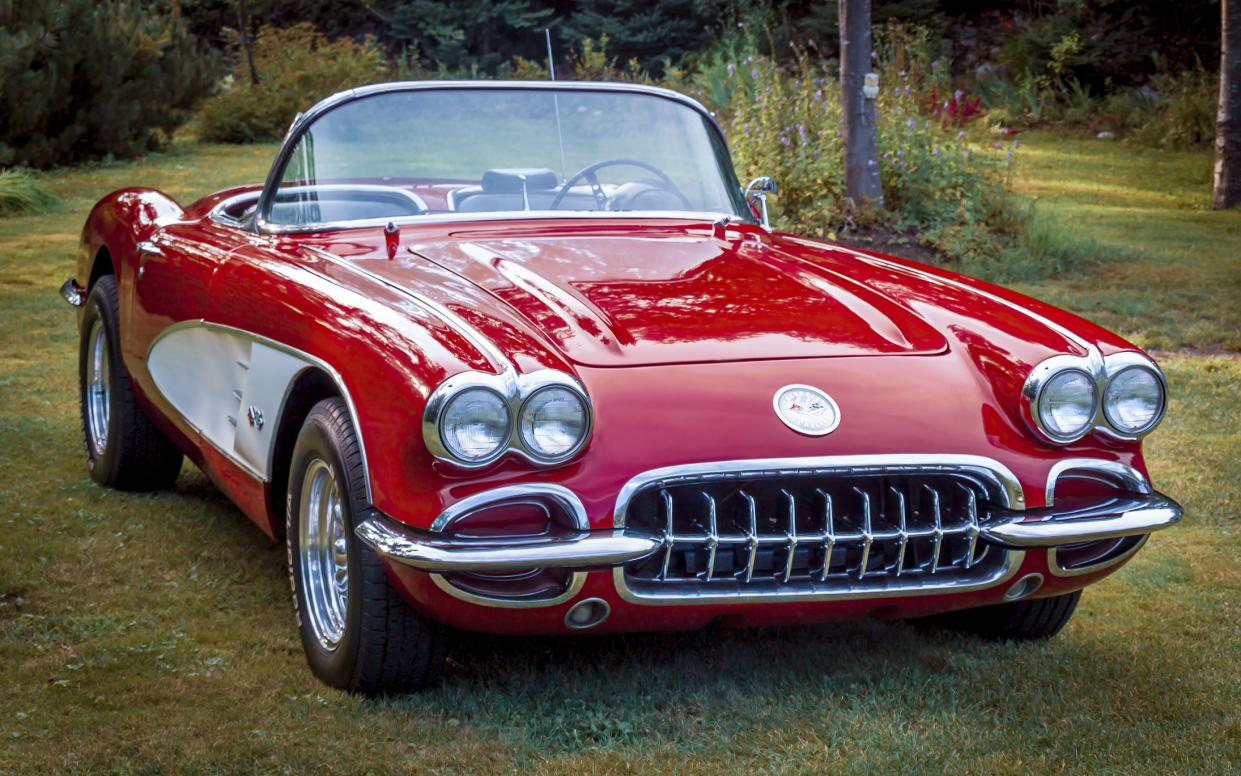
Not much changed between the 1959 and 1960 Corvettes, but the subtle changes Chevy implemented were impactful. With the ’60 model came new rear sway bars which improved the car’s handling and the addition of aluminum radiators and clutch housing caused the Corvette to lose 18 pounds. The car’s fiber-glass reinforced plastic body-sculptured side panels and the option for a two-tone exterior were some of the highlights in terms of body exterior for the ’60 model.
Related: 15 Legendary Corvettes We'd Love to Drive
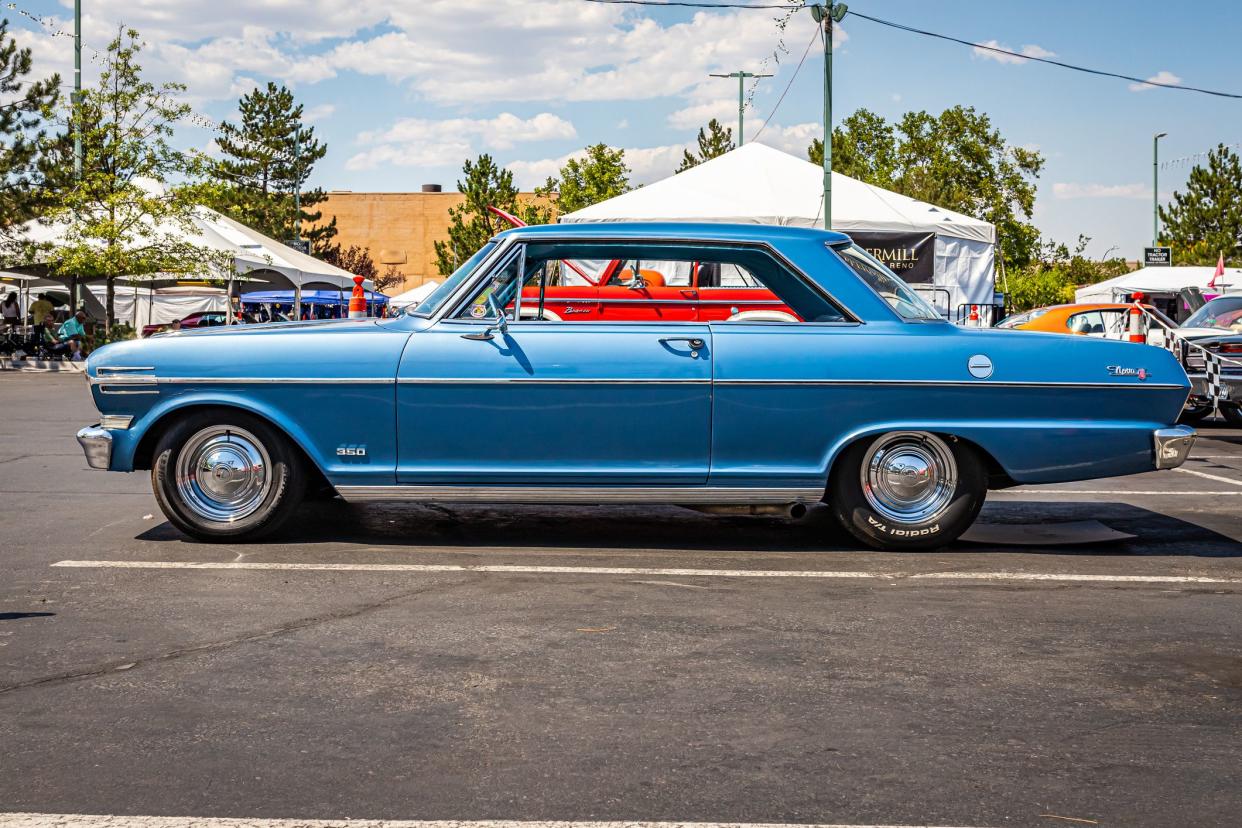
From its inception in 1962 until 1967, the car itself was called the Chevy II and the Nova was a trim level. After 1967, the nameplate officially transitioned to the Chevy Nova. Chevrolet rolled out the first Nova in just 18 months in order to rival Ford’s Falcon. Created as a conventional compact car, the Chevy II was available in two- and four-door options as well as convertible and station wagon versions. Although the Ford Falcon continued to outsell the Chevy II in 1962, one thing is for sure: the Nova evolved rapidly. That first, simple and sensible ’62 Nova completely morphed into a sleek, sought-after muscle car by 1968.
Related: Vintage Convertibles That Will Blow Your Hair Back
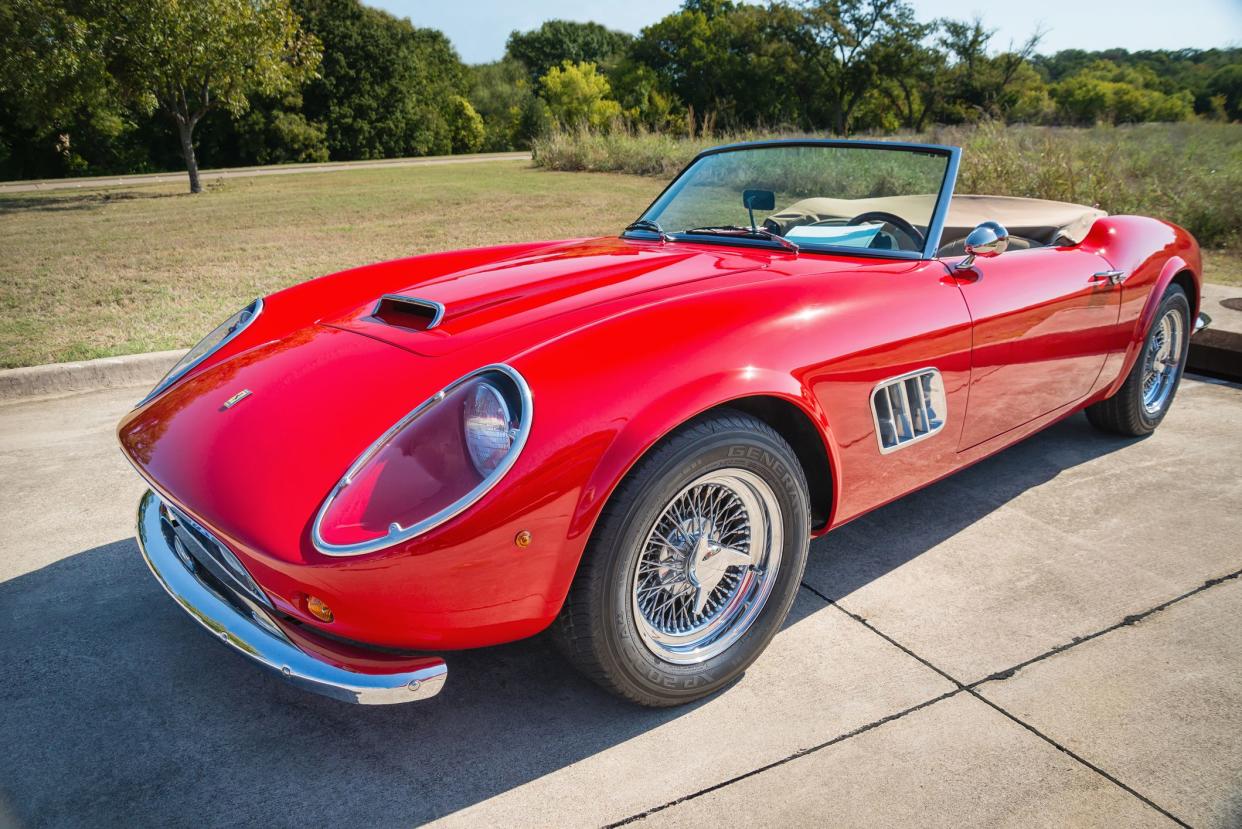
As one of Enzo Ferrari’s earlier designs, the Ferrari 250 GTO was about twice the price of a Corvette when it debuted, and it dominated race tracks all over the world with its 3.0-liter V12 engine — which made 300 horsepower. Of course, such an iconic car comes with quite the hefty price tag. Until recently, it was the most expensive car on the planet — one sold at auction for $38 million in 2014 and another went for $48 million in 2018. A 1955 Mercedes-Benz 300 SLR Uhlenhaut Coupe sold at auction in 2022 for $142 million, snatching the most expensive car title from the legendary Ferrari.
Related: 20 Classic Italian Sports Cars We Wish Were in Our Driveway
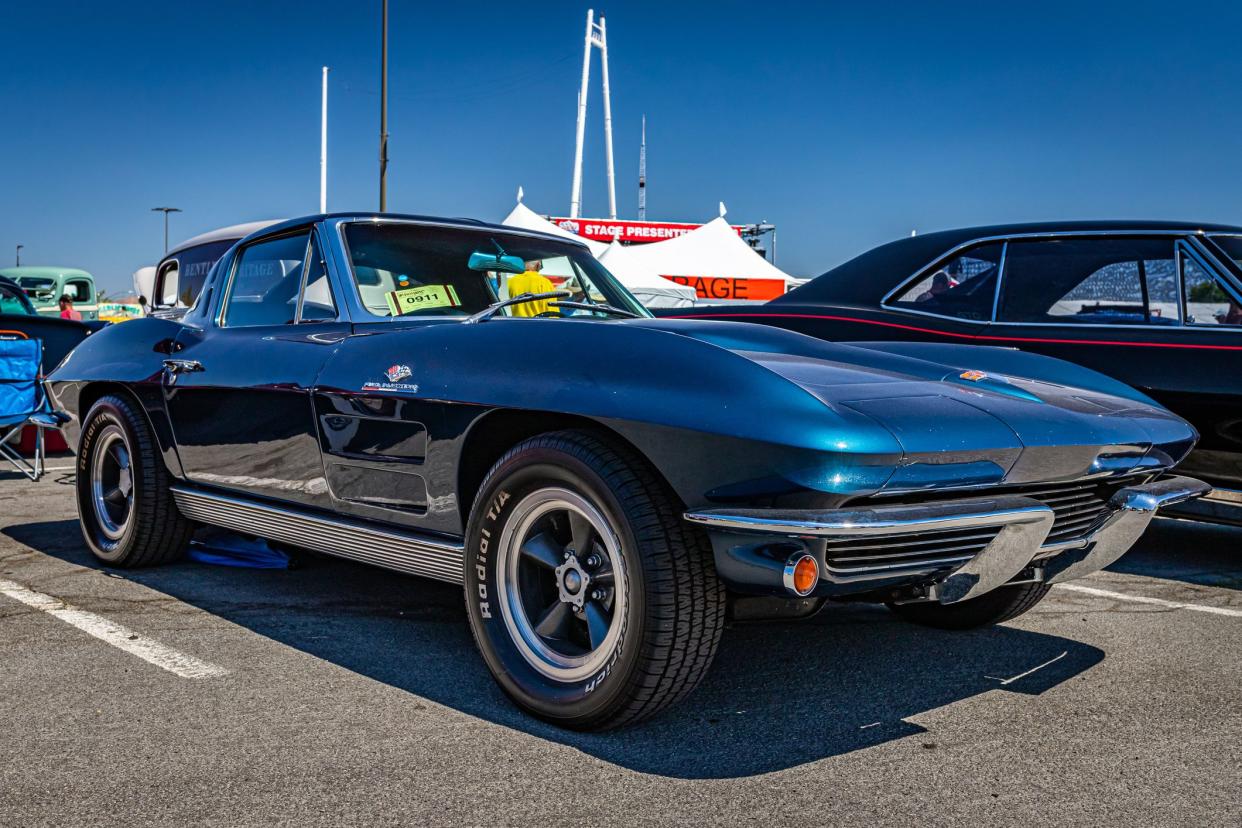
Showcasing both style and performance, the 1963 Chevy Corvette Stingray challenged the Shelby Cobra during its heyday. The ’63 Stingray was the first model of the second-generation Chevy two-seaters and it rivaled a Ferrari's performance and handling. The car featured independent rear suspension and a fuel-injected, 327-cubic-inch small block — and it made 360 horsepower. But the split-window Vette wasn’t just mind blowingly fast — it was lightweight, nimble, and incredibly beautiful.

Exuding elegance and style, the 1964 Aston Martin DB5 is one of the most legendary grand tourers ever produced. The flashy ride came with a 5-speed transmission — a feature that has since become the norm across automakers. The Aston Martin DB5 was cemented as an icon when it was showcased as James Bond’s car in “Goldfinger” and “Thunderball.”
Related: 26 Most Iconic Movie and TV Cars

The Porsche 911 was Ferdinand Porsche’s second model he ever produced and it took off running. What was sparked by the automaker’s desire to produce a larger, more powerful car than his debut Porsche 356 became a true automotive icon. Despite its origins, the ’64 Porsche 911 wasn’t known for its powerful engine as much as its sleek appearance and superb handling. The car was so influential that it’s still in production today and although it has gone through constant development, Porsche has remained true to the original concept for the car.
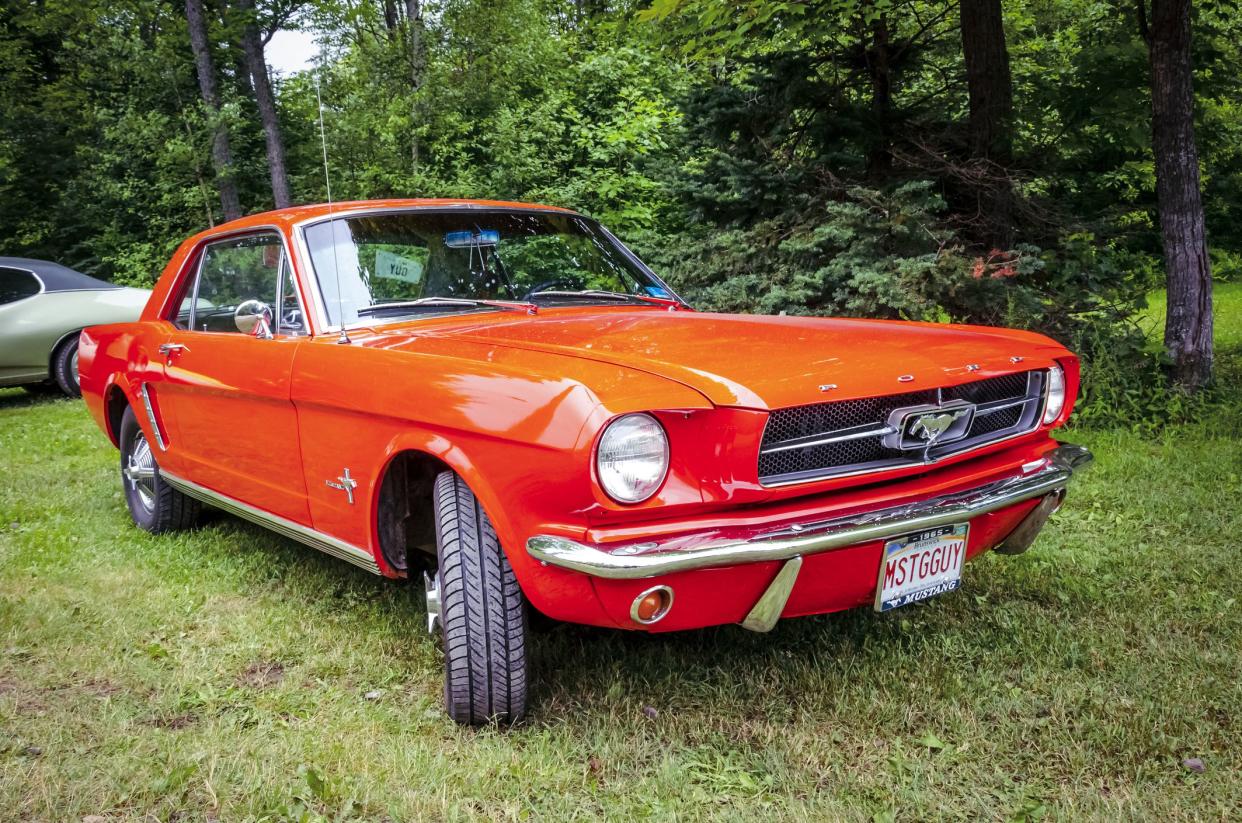
The Ford Mustang was the original pony car, combining the functionality of a four-seat vehicle with the image and performance of a sports car. Despite the original model not being very fast, Ford also offered a V8 option that showed what the design really had to offer. The original sales forecast anticipated less than 100,000 units for the first year, but that prediction was obliterated within the first three months. The ’65 Mustang was also the first car to ever win the Tiffany Gold Medal for Excellence in American Design.
Related: 16 Best Mustangs of All Time

Permanently a part of automotive culture, the powerful and lightweight Shelby Cobra was automaker Carroll Shelby’s literal dream come true — he came up with the name “Cobra” in his sleep. Cobras were produced between 1962 and 1967 with a plethora of upgrades during those five years. 1966 welcomed the most powerful Cobra with a 427 competition model that made 485 horsepower. The only surviving 1966 Shelby 427 Cobra Super Snake — which was custom-made for Carroll Shelby — dubbed “The Cobra to End All Cobras,” sold at auction for $5.5 million in 2021.

The Lamborghini Miura was the first supercar with a rear mid-engined, two-seat layout — which was so influential that it has since become the standard for high-performance supercars. Encompassing all things power, speed, and beauty, the flashy ride’s athleticism matched its looks. When it came out in 1966, the Miura was the fastest production car on the planet, generating a staggering 350 horsepower.
Related: The Most Expensive Celebrity Cars

Chevy’s Chevelle — though it wasn’t as popular as the Corvette or Camaro — was one of the most legendary cars of the ’60s. The Chevelle was produced in three generations, but 1966 was one of the most iconic years, showcasing a total restyling of the muscle car. The ’66 model introduced curved side windows, a broad grille and new bumper treatment, and a sleek, contoured frame. Looks aside, ’66 also brought horsepower — and lots of it. The 396 big block Chevelle made well over 350 horsepower.
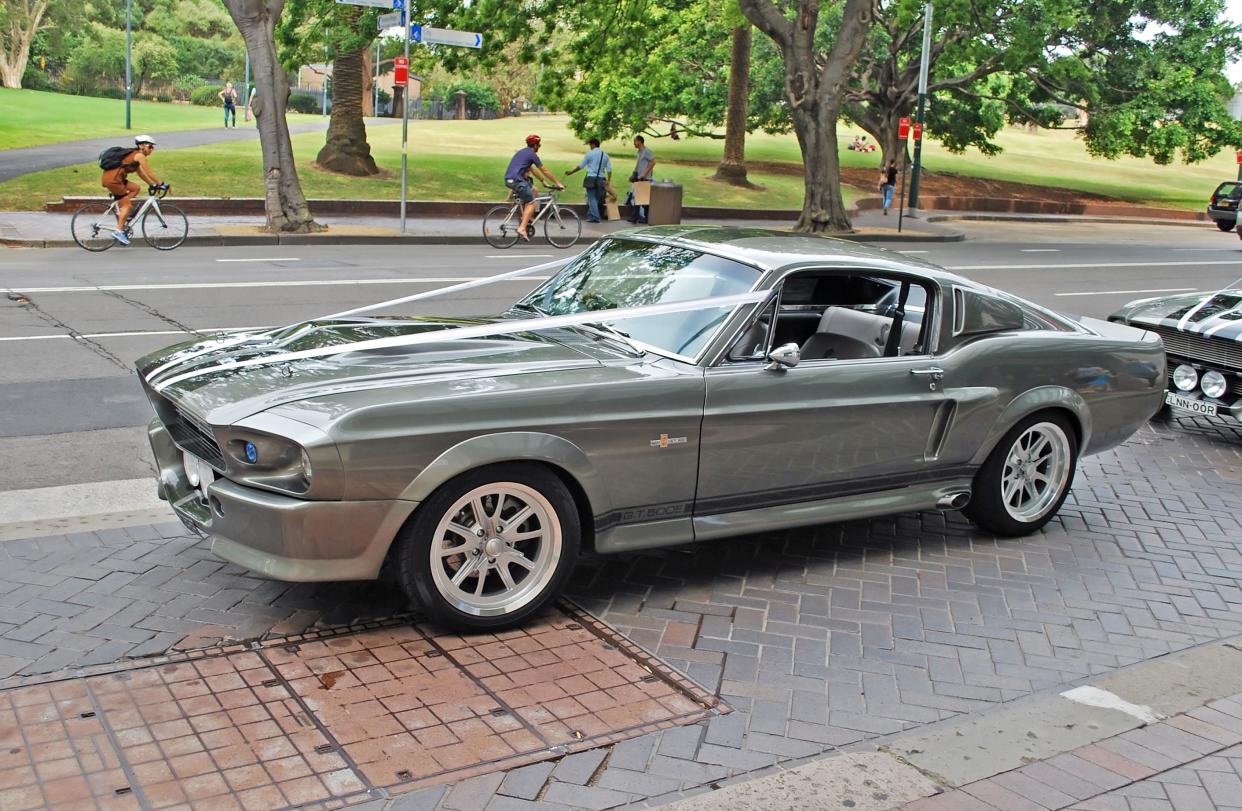
With a 428-cubic inch engine, the 1967 Shelby GT 500 made an astonishing 355 horsepower. The supercharged beast of a car also had such a breathtaking appearance that it was deemed beautiful enough for the big screen. “Eleanor” was Steve McQueen’s — played by Nicholas Cage — epic car in the movie “Gone in 60 Seconds.”
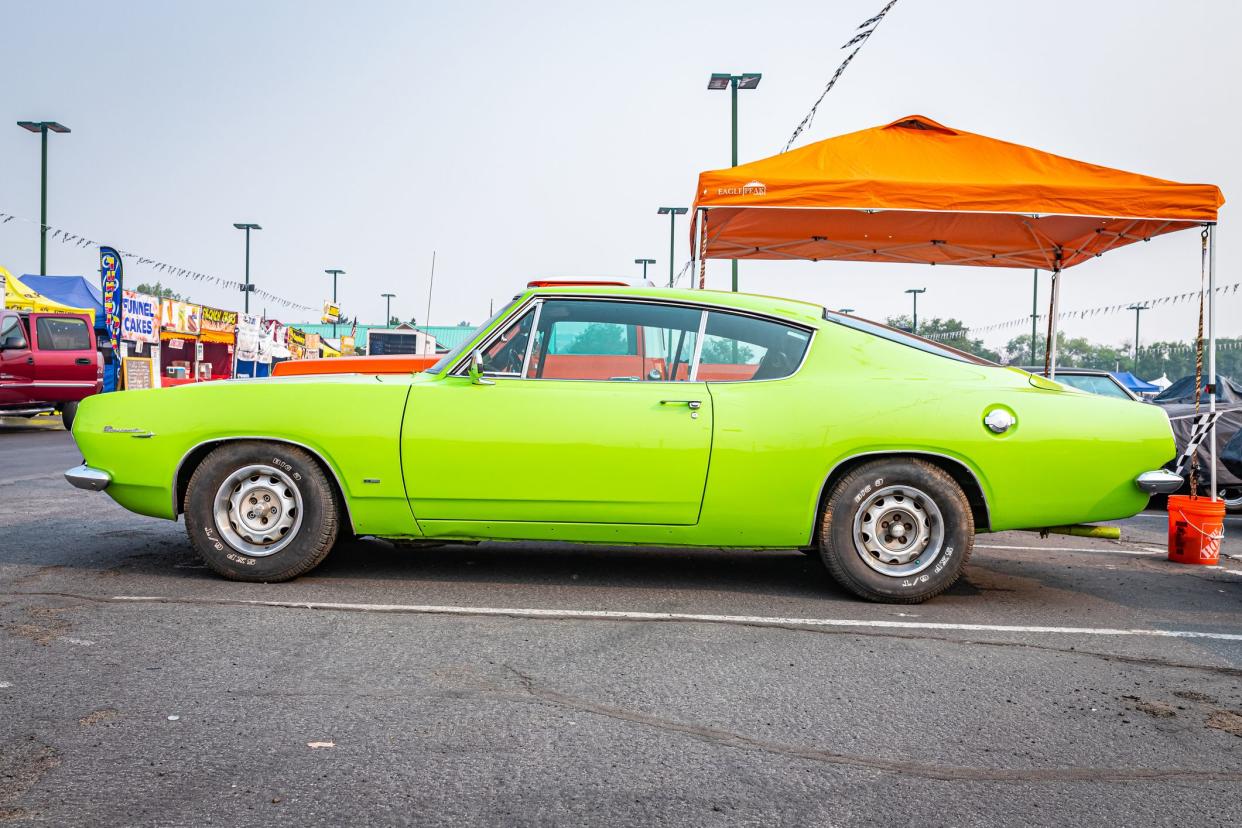
Ooh, Barracuda! The Plymouth Barracuda was designed to rival the Mustang, launching just two weeks before its competition. The ‘Cuda’s back end featured a large, wrap-round window which set it apart from comparable vehicles in the ’60s. ’67 welcomed a substantial redesign, offering convertible, hardtop coupe, and fastback trim options. Surrounding the buzz of the pony class, the ’67 model came complete with revised engine sizes including V8 options and a big block version.
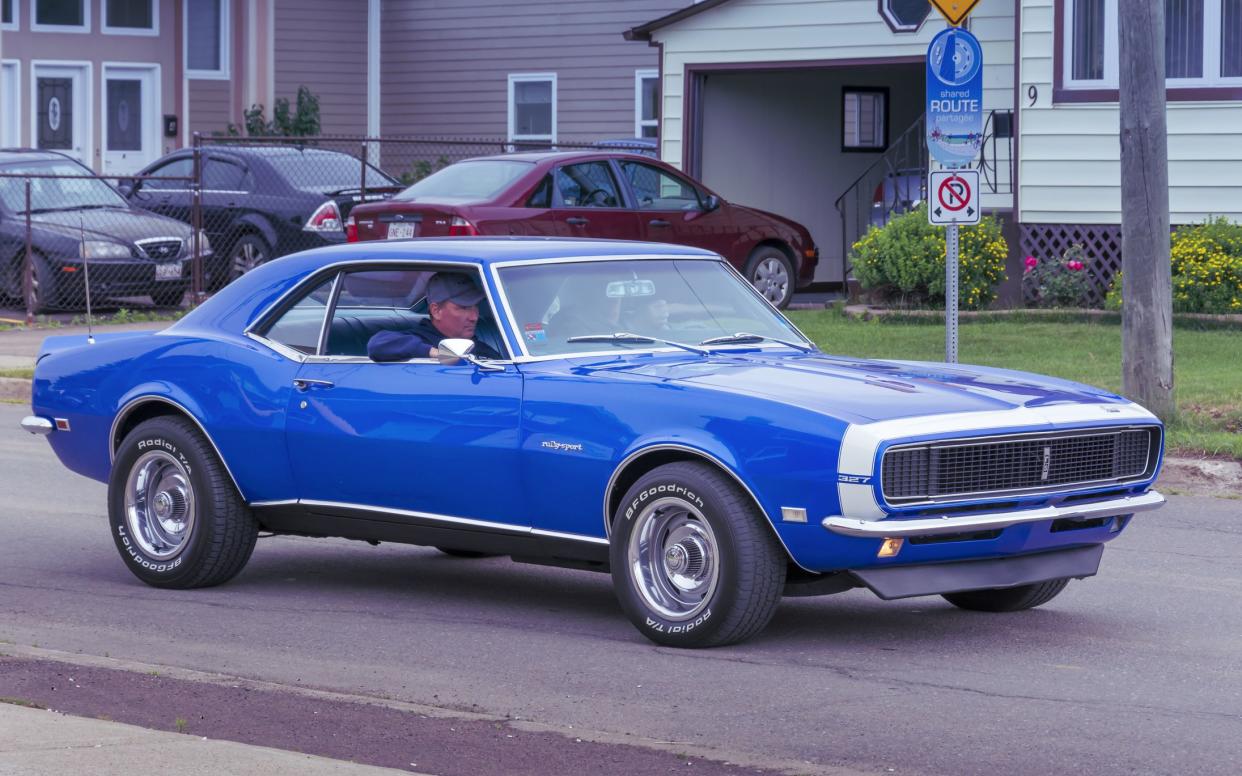
The 1968 Chevy Camaro’s exterior showcased a distinct beauty that made it a real contender to Ford’s sought after Mustang. The ’68’s wide stance and curved side windows were some of the most notable changes for the model year. And the inside exuded luxury with elegant door styling with metal inserts, a new steering wheel, and a three-speed, column-mounted shifter. The car was available in both Rally Sport and Super Sport packages, each with a slew of attractive features.
Related: 12 Surprising Things About the Chevy Camaro
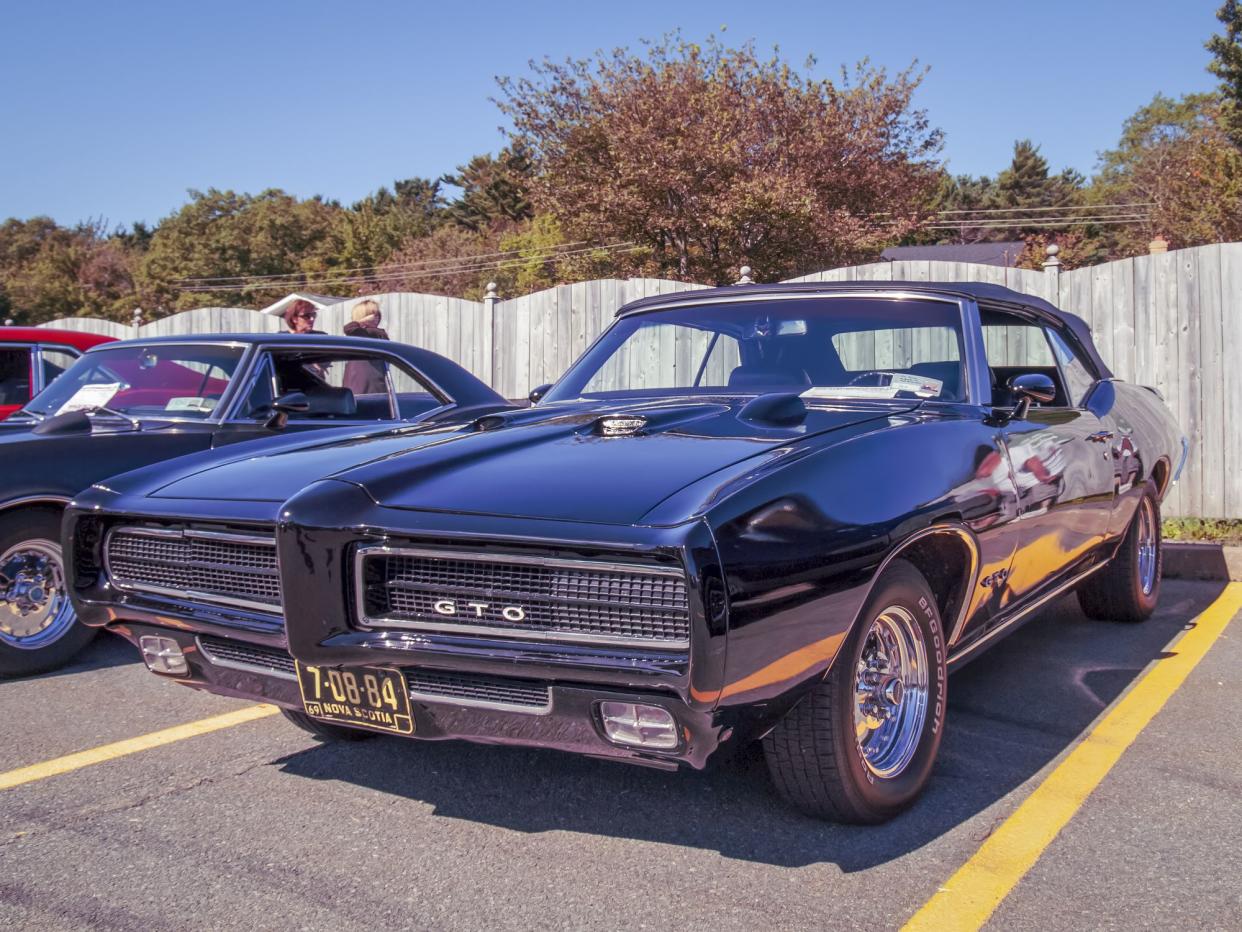
First offered in 1964, the Pontiac GTO was a game changer in the world of muscle cars, challenging other automakers to take their models to the next level. The 1969 model, dubbed “The Judge,” moved the ignition from the dashboard to the steering column, locking the steering wheel when the key wasn’t in — a feature that became a federal requirement just one year later. ’69 also introduced the 400 Ram Air engine, which was rated at 366 horsepower.
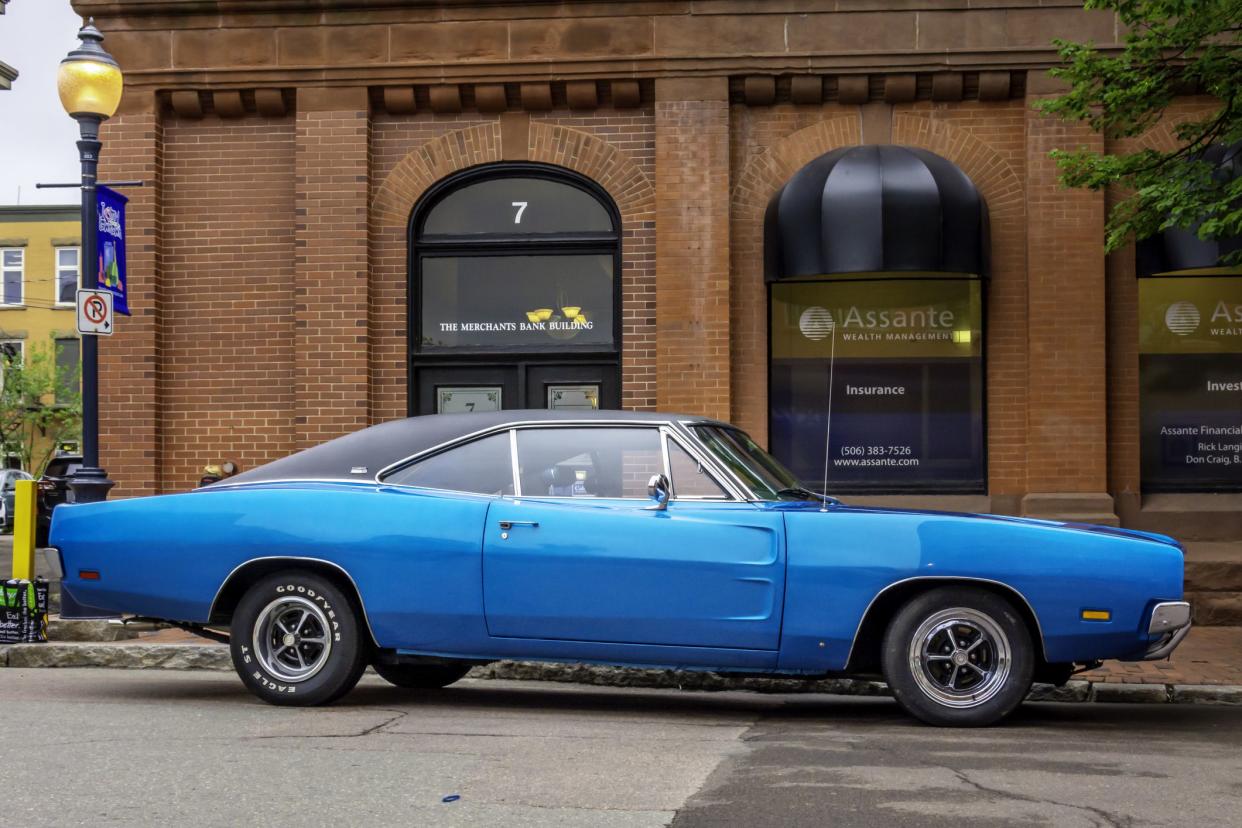
Dodge’s 1969 Charger was one of the most legendary model years of all-time. The car had a sleek, classic muscle car appearance and packed a punch in terms of power. It was offered in two different 383 engines: a two-barrel rated at 290 horsepower or a four-barrel rated at 330 horsepower. The ’69 Charger was also cemented in pop culture when it was regularly featured on the TV show “The Dukes of Hazzard.”
